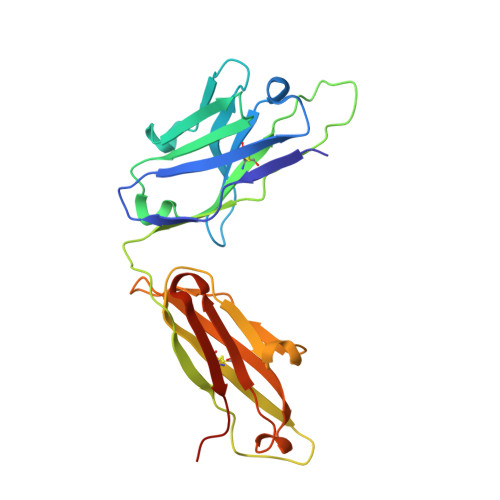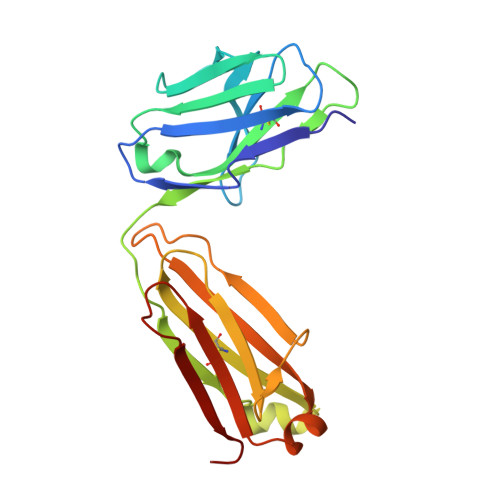Identification and characterization of an unexpected isomerization motif in CDRH2 that affects antibody activity.
Yi, M., Sun, J., Sun, H., Wang, Y., Hou, S., Jiang, B., Xie, Y., Ji, R., Xue, L., Ding, X., Song, X., Xu, A., Huang, C., Quan, Q., Song, J.(2023) MAbs 15: 2215364-2215364
- PubMed: 37229604
- DOI: https://doi.org/10.1080/19420862.2023.2215364
- Primary Citation of Related Structures:
8JBJ - PubMed Abstract:
Aspartic acid (Asp) isomerization is a spontaneous non-enzymatic post-translation modification causing a change in the structure of the protein backbone, which is commonly observed in therapeutic antibodies during manufacturing and storage. The Asps in Asp-Gly (DG), Asp-Ser (DS), and Asp-Thr (DT) motifs in the structurally flexible regions, such as complementarity-determining regions (CDRs) in antibodies, are often found to have high rate of isomerization, and they are considered "hot spots" in antibodies. In contrast, the Asp-His (DH) motif is usually considered a silent spot with low isomerization propensity. However, in monoclonal antibody mAb-a, the isomerization rate of an Asp residue, Asp55, in the aspartic acid-histidine-lysine (DHK) motif present in CDRH2 was found to be unexpectedly high. By determining the conformation of DHK motif in the crystal structure of mAb-a, we found that the Cgamma of the Asp side chain carbonyl group and the back bone amide nitrogen of successor His were in proximal contact, which facilitates the formation of succinimide intermediate, and the +2 Lys played an important role in stabilizing such conformation. The contributing roles of the His and Lys residues in DHK motif were also verified using a series of synthetic peptides. This study identified a novel Asp isomerization hot spot, DHK, and the structural-based molecular mechanism was revealed. When 20% Asp55 isomerization in this DHK motif occurred in mAb-a, antigen binding activity reduced to 54%, but the pharmacokinetics in rat was not affected significantly. Although Asp isomerization of DHK motif in CDR does not appear to have a negative impact on PK, DHK motifs in the CDRs of antibody therapeutics should be removed, considering the high propensity of isomerization and impact on antibody activity and stability.
- Department of Biologics, BeiGene (Beijing) Co. Ltd, Beijing, China.
Organizational Affiliation:

















